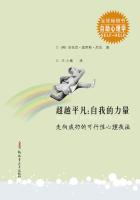The custom of eating pork on New Year’s is based on the idea that pigs symbolize progress. The animal pushes forward, rooting itself in the ground before moving. Roast suckling pig is served for New Year’s in Cuba, Spain, Portugal, Hungary, and Austria—Austrians are also known to decorate the table with miniature pigs made of marzipan. Different pork dishes such as pig’s feet are enjoyed in Sweden while Germans feast on roast pork and sausages. Pork is also consumed in Italy and the United States, where thanks to its rich fat content, it signifies wealth and prosperity.
Fish
Fish is a very logical choice for the New Year’s table. According to Mark Kurlansky, author of Cod: A Biography of the Fish that Changed the World, cod has been a popular feast food since the Middle Ages. He compares it to turkey on Thanksgiving. The reason? Long before refrigeration and modern transportation, cod could be preserved and transported allowing it to reach the Mediterranean and even as far as North Africa and the Caribbean. Kurlansky also believes the Catholic Church’s policy against red meat consumption on religious holidays helped make cod, as well as other fish, commonplace at feasts. The Danish eat boiled cod, while in Italy, baccalà, or dried salt cod, is enjoyed from Christmas through New Year’s. Herring, another frequently preserved fish, is consumed at midnight in Poland and Germany—Germans also enjoy carp and have been known to place a few fish scales in their wallets for good luck. The Swedish New Year feast is usually a smorgasbord with a variety of fish dishes such as seafood salad. In Japan, herring roe is consumed for fertility, shrimp for long life, and dried sardines for a good harvest (sardines were once used to fertilize rice fields).
Cakes, Etc.
Cakes and other baked goods are commonly served from Christmas to New Year’s around the world, with a special emphasis placed on round or ring-shaped items. Italy has chiacchiere, which are honey-drenched balls of pasta dough fried and dusted with powdered sugar. Poland, Hungary, and the Netherlands also eat donuts, and Holland has olliebollen, puffy, donut-like pastries filled with apples, raisins, and currants. In certain cultures, it’s customary to hide a special trinket or coin inside the cake—the recipient will be lucky in the New Year.
Cakes aren’t always round. In Scotland, where New Year’s is called Hogmanay, there is a tradition called “first footing”, in which the first person to enter a home after the new year determines what kind of year the residents will have. The “first footer” often brings symbolic gifts like coal to keep the house warm or baked goods such as shortbread, oat cakes, and a fruit caked called Black Bun, to make sure the household always has food.
What Not to Eat
In addition to the aforementioned lucky foods, there are also a few to avoid. Lobster, for instance, is a bad idea because they move backwards and could therefore lead to setbacks. Chicken is also discouraged because the bird scratches backwards, which could cause regret or dwelling on the past. Another theory warns against eating any winged fowl because good luck could fly away.
Vocabulary 词汇
category ["k?tiɡ?ri] n. 类别,分类
auspicious [?:"spi??s] adj. 吉兆的,吉利的,幸运的
menu ["menju:, m?"nju:] n. 菜单
assortment [?"s?:tm?nt] n. 分类,混合物
recipe ["resipi] n. 食谱;[医]处方,秘诀
initiate [i"ni?ieit] vt. 开始,创始,发起;
n. 开始,新加入者
collard ["k?l?d] n. [植]羽衣甘蓝
stewed [stju:d] adj. 焦虑不安的,烂醉的,炖煮的;
v. 使……焦虑不安
association [?"s?usi"ei??n] n. 协会,联盟,联合,联想
prosperity [pr?s"periti] n. 繁荣,成功
biography [bai"?ɡr?fi] n. 传记,档案,个人简介
fertility [f?"tiliti] n. 肥沃,丰饶,生产力
trinket ["tri?kit] n. 小装饰品;
vi. 密谋
aforementioned [?"f?:"men??nd] adj. 上述的,前面提及的
dwell [dwel] vi. 居住,存在于,细想某事
Practice
Which foods are popular in New Year?
译文
在很多国家,1月1日都是一个辞旧迎新的日子。吃一顿大餐也是新年行好运的一个好办法。有多种食物被认为可以提高幸运的几率,让我们明年成为一个极幸运的人。各地传统因文化不同而有差异,但同样有惊人的相似之处。世界各地公认的6大类吉祥的食物是葡萄、绿色蔬菜、鱼肉、猪肉、豆类和蛋糕。不管你是想要制定一个包涵幸运食物的完整菜单,或者只是为三餐做补充,我们有各式各样的配方,准会让你们过一个快乐的新年。或者,最起码满足你们的口腹之欲。
葡萄
西班牙人会在新年的夜晚吃掉12颗葡萄——每一粒葡萄就代表一个时辰。而后,这项传统演变为:一粒葡萄代表每年的一个月。所以,如果你吃到的第三粒葡萄有点酸,那么来年3月可能就不顺。不过最盛行的习俗还是赶在午夜钟响之前把所有的葡萄都吃掉!
绿色蔬菜
诸如卷心菜、甘蓝菜和厚皮菜这样的绿色蔬菜也是很多国家的新年食品。人们吃它的原因很简单:它们绿油油的叶子就像是钞票上的绿色,所以吃掉它们就表示来年财运不断。在丹麦,人们会吃炖甘蓝菜、配糖霜和桂皮;在德国,酸白菜是菜单之一;美国南方,羽衣甘蓝也是选择之一。大部分人都相信,吃掉这些绿色蔬菜,来年就财源滚滚啦!
豆类
包括豆荚、豌豆和小扁豆在内的豆类也被视为是钱的象征。因为它们小小的豆粒看起来就像是硬币,煮过以后涨起来、吃下去就像得到钱一样。在意大利,人们用腊肠来配豆子吃;德国的传统搭配是酸白菜加猪肉,通常还有扁豆汤;在巴西,新年的第一餐往往是扁豆汤或扁豆和米饭;在日本,在新年前三天要吃一些象征性的菜肴,其中包括甜黑豆,被称为kuro-mame。
美国南方的传统是一道叫“希望约翰”的菜,里面有黑豆。甚至有人相信,在新年里每天吃一粒豆子都会给来年带来好运。这一切传统的起源,可以追溯到南北战争时期。维吉尼亚州的维克斯堡,由于战争而断粮,幸运的是,当地居民发现了黑豆,从而得以存活下来。从此以后,黑豆就成了幸运的象征。
猪肉
新年吃猪肉的传统是基于人们认为这种动物象征着进步。烤乳猪是古巴、西班牙、葡萄牙、匈牙利和奥地利的传统新年食品。奥地利人还会把杏仁甜饼做成小猪的样子来装饰餐桌。其他的猪肉大餐也在全球各地流行,比如瑞典人吃猪脚;德国人吃猪脚和香肠。在意大利和美国,得益于猪肉丰富的脂肪,人们也把它作为财富的象征。
鱼
鱼,是新年餐桌上理性选择。根据《鳕鱼:一种改变世界的鱼的自传》作者马克·克兰斯基的说法,鳕鱼自中世纪起就是一种广受欢迎的节日食品。他认为鳕鱼相当于感恩节吃的火鸡。什么原因呢?在现代制冷技术和运输手段发明以前,鳕鱼能够长时间不坏,并运送到地中海、甚至是南非、加勒比地区。克兰斯基同时还相信天主教堂反对在宗教节日期间吃红肉的条例帮助了鳕鱼和其他鱼类在节庆中的发展。丹麦人吃煮的鳕鱼;在意大利,人们在圣诞节和新年吃盐渍的干鳕鱼;波兰人和德国人在新年晚上吃另一种常见的鱼类,鲱鱼;德国人同时还喜欢螃蟹,并且相信在口袋里装一些鱼鳞会带来好运。
蛋糕等食物
蛋糕和其他烘焙点心在全球各地都是圣诞到新年间的食物,尤其是圆形或环形的点心。意大利人做chiacchiere,那是一种用蜂蜜浸透的面团炸过再撒上糖霜吃;波兰、匈牙利和荷兰人吃甜甜圈。荷兰人的“甜甜圈”olliebollen质地松软,里面的馅儿有苹果、葡萄干和加仑子。在某些文化里,还有把硬币塞进蛋糕里的传统,吃到的人来年会有好运气。
蛋糕也并非总是圆的。在苏格兰,新年被叫做“苏格兰大年夜”,有一个传统叫“第一个进门的人”,也就是说,在新年里,第一个踏入自己家门的人,将会决定未来一年的际遇。那些“第一个进门的人”往往会带一些象征性的礼物,比如煤炭,代表让这个家保持温暖,或者是一些烘烤的食品,比如酥饼、燕麦饼或者是一种叫做Black Bun的水果糕点,以确保自己拜访的家庭总有食物。
新年禁忌食物
除了这些幸运食物之外,相对的,也有一些最好在新年避开的食物。比如龙虾,因为它总是倒着爬,在新年吃它象征倒退,这样可不好。还有传统警告我们要避开所有带翅膀的家禽,因为它们暗示着幸运会飞走。
练习
哪些食物在新年是受欢迎的?
Grapes, cooked greens, legumes, pork, fish and cakes, Etc.
08 Sleepyhead Day 贪睡人的节日














